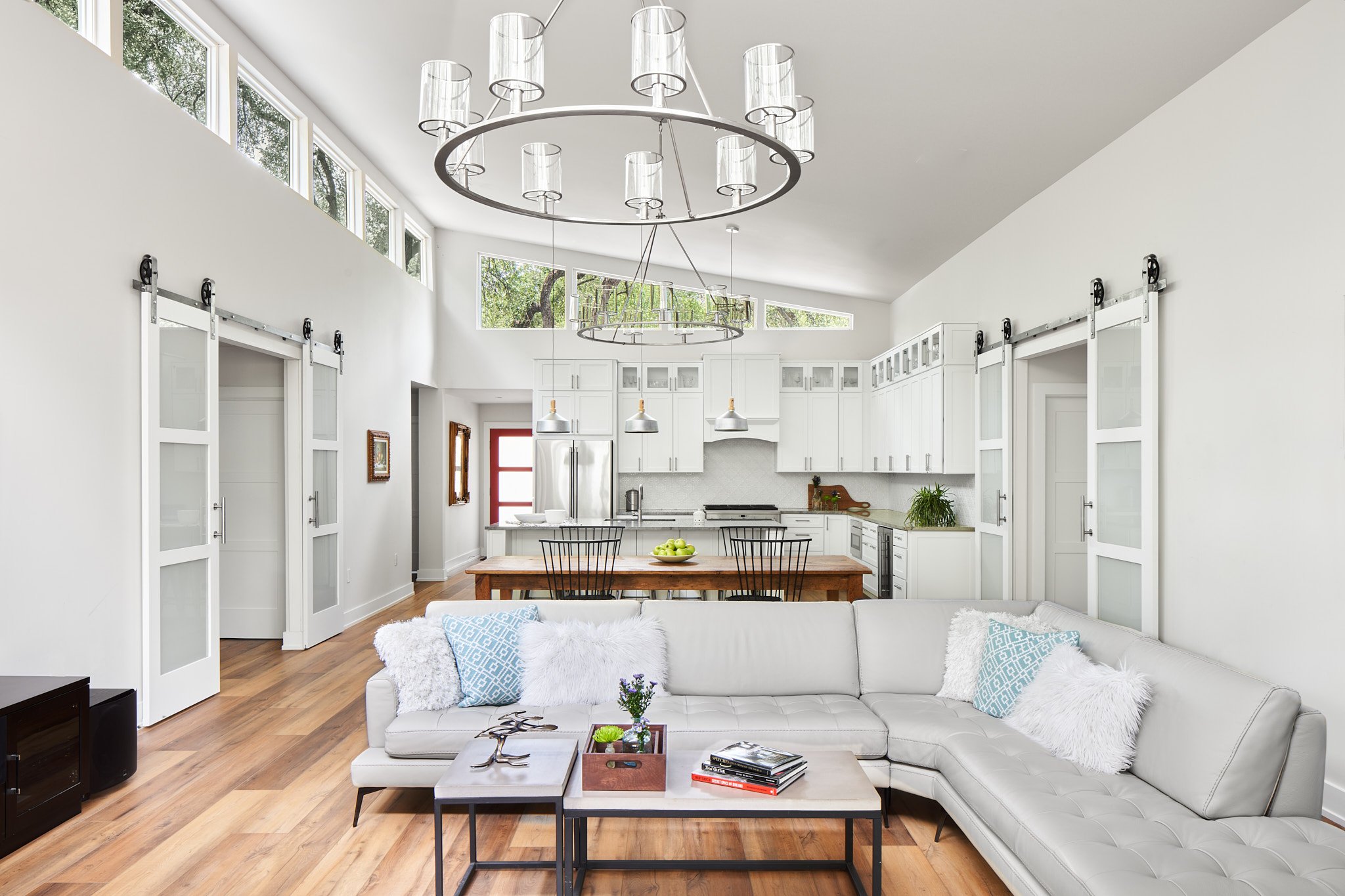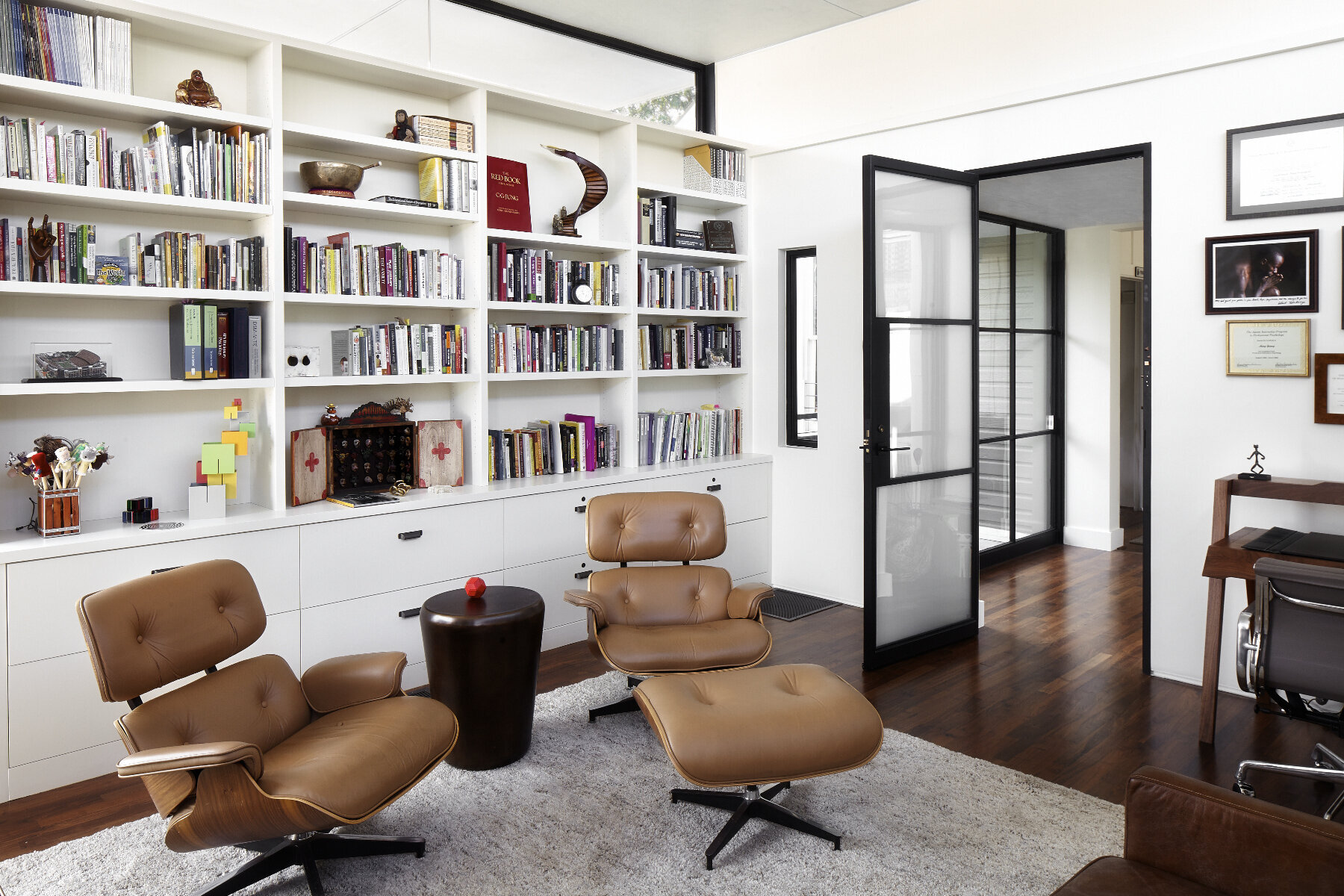How to Choose the Right Interior Doors for Your Home
Our Austin Architects Explain How to Choose Functional and Beautiful Interior Doors
While your front door makes the first impression, your interior doors will continue to carry the look and feel of your architectural style throughout your home. So, they cannot be overlooked. Learn how to choose interior doors for your home with the help of our Austin architects. We review all the design considerations to keep in mind when making your interior door selections, including style options, panel designs, materials, and hardware.
Interior Doors: Top Factors to Consider
In previous blogs, we’ve discussed how to choose the right front door and patio doors for your home. Interior doors have similar considerations to keep in mind, including how they open and panel styles. Additionally, interior doors need to coordinate with the architectural style of the interiors and provide adequate levels of privacy and soundproofing between rooms. Here are the top factors to consider when choosing interior doors.
Interior Door Styles
The door style refers to how the door opens and operates.
Standard Swing Door
A standard or swing door is the most common interior door style. This single door either opens inwards or outwards, depending on the floor plan.
Pocket Door
Unlike a swing door that opens in or out, a pocket door slides on concealed track rollers into a wall cavity. Pocket doors come in single or double designs. They function well in smaller rooms, like a powder bathroom, where a swing door may take up too much space to open and close.
Pocket Door Notes
While some people have experienced older model pocket doors falling off the track or sticking, newer designs have been engineered for improved function and easy opening. Since pocket doors slide into a wall cavity, they require advanced planning.
French Doors
French doors are a pair of swinging doors. Available in a range of widths, French doors can be as wide as two full-sized doors or the width of a traditional single door. While many French door designs feature full panels of divided glass, they also come in solid panels. French doors make for a unique feature and a memorable transition between rooms.
Dutch Door
A Dutch door, also known as a double-hung door, is divided horizontally to allow the bottom half to remain closed when the top half is open. Dutch doors are a practical feature in kitchens, mudrooms, or laundry rooms where you can open the door for sightlines or airflow while preventing pets or small children from walking from room to room.
Interior Door Panel Styles
The door panel style refers to the decorative elements on the door’s surface.
Raised Panel
Raised panels have a traditional appearance. The style typically features more detailed trim and tiered steps up to a raised panel in the center. Raised panel doors work well in traditional and Mission-style homes.
Recessed Panel
Recessed or shaker panel doors are similar to a raised panel but have a more streamlined appearance. This style features a flat panel framed with a simple border. The border's width can range from a thick to a slim profile. This style works well in transitional and Craftsman-style homes.
Slab Panel
Slab panel doors offer a minimalist look and feature one flat panel without any additional trim. This style provides a sleek finish that is perfect for contemporary homes.
Door Panel Style Notes
Interior doors can have one, 10, or more panels arranged in various ways depending on the design. The panel arrangement and the sticking or molding profiles will add to the style of the door. Pay attention to these details, as some panel styles will coordinate better with the architecture of your home. Also, consider coordinating your door panel style with your cabinet style for a cohesive look.
Interior Door Construction
The door construction will affect the price point and sound quality.
Hollow Core Door
Hollow core doors are constructed with a thin layer of wood or fiberglass laid over a reinforced structure with a hollow center. These doors are less expensive to manufacture. However, they don’t provide the same level of sound insulation or weight as a solid door.
Solid Core Door
Solid core doors are either made of solid wood or composite wood with a wood veneer overlay. These doors provide more sound insulation and a heavier feel often associated with higher-quality construction.
Interior Door Material
The door material will affect price point and longevity.
Wood Door
Solid wood doors offer the longest longevity and can be fully customized with any paint or stain color you can imagine. These doors can last hundreds of years and can easily be resurfaced when needed.
Composite Door
Composite doors are less expensive than solid wood doors and offer the same benefits of sound insulation and weight. However, composite doors don’t have the longevity of wood doors, and veneers can’t be resurfaced as often as solid wood.
Interior Door Hardware
Endless door hardware options allow you to customize your interior doors.
Lock Set
Lock-set hardware simply means the doors have a lock. This type of hardware is appropriate to use in areas that require privacy, such as bedrooms and bathrooms.
Passage Set
Passage set hardware does not include a lock. This type of hardware is best suited for closets, hallway doors, and children’s playrooms.
Knobs
Door knobs are traditional rounded door handles that can be applied to various door styles.
Levers
Door levers are horizontal door handles. When installing levers, it’s important to note the direction the door opens and whether a right or left-oriented handle is required.
Latches & Hinges
Door latches and hinges are less noticeable hardware elements than handles. However, they cannot be overlooked. They should match the rest of the door hardware for a consistent appearance.
Door Hardware Notes
When selecting door hardware, consider matching or coordinating with other hardware and fixtures in your home. While you don’t have to limit yourself to one metal finish, they should all blend well together.
Picking the Right Doors for Your Home
Picking the right interior doors for your home comes down to your style, budget, and practical needs. Remember different rooms may benefit from different door styles, like pocket doors. When selecting design elements, coordinate with the rest of your home’s architectural style. There are many decisions to make around doors, so rely on the expertise of your architecture and design team.





